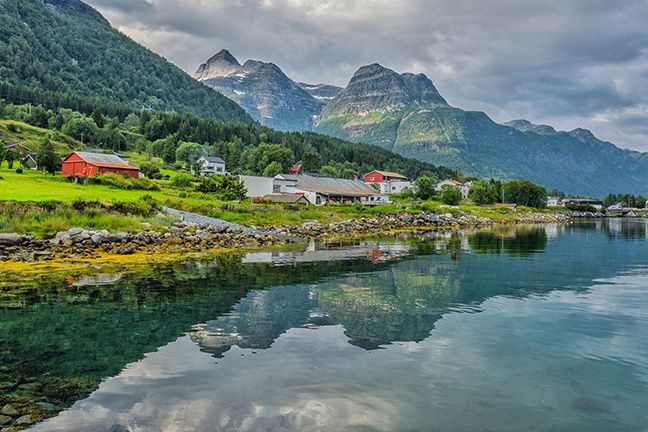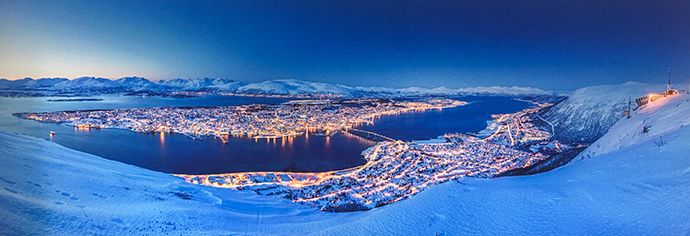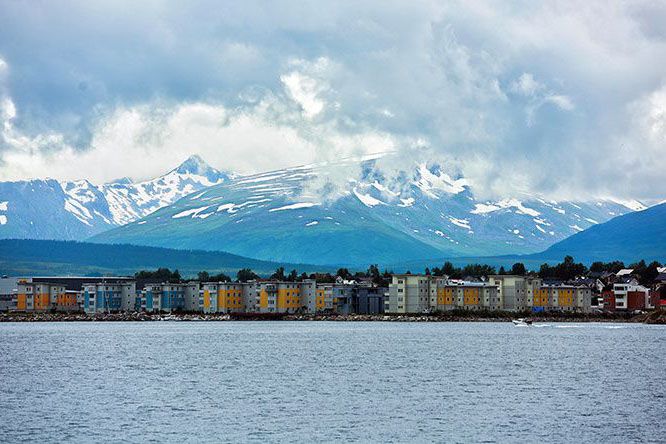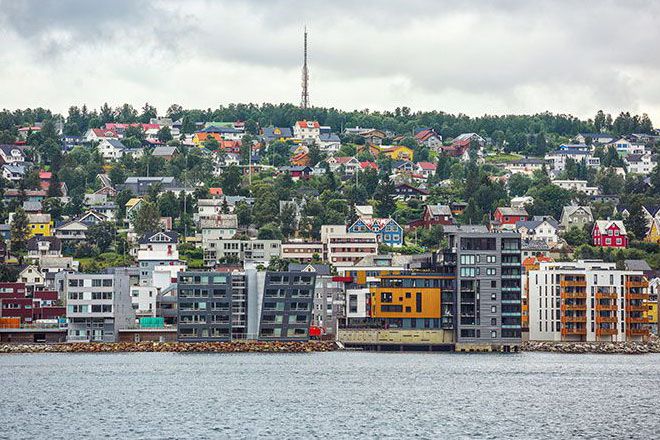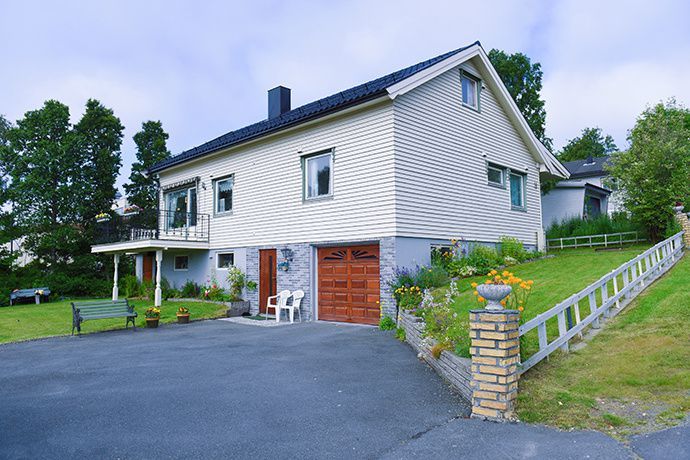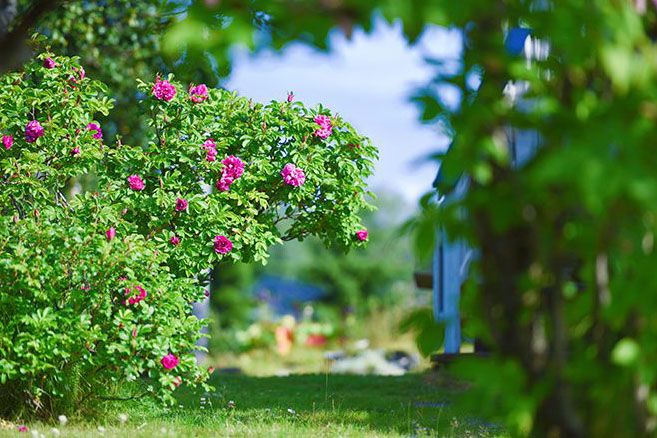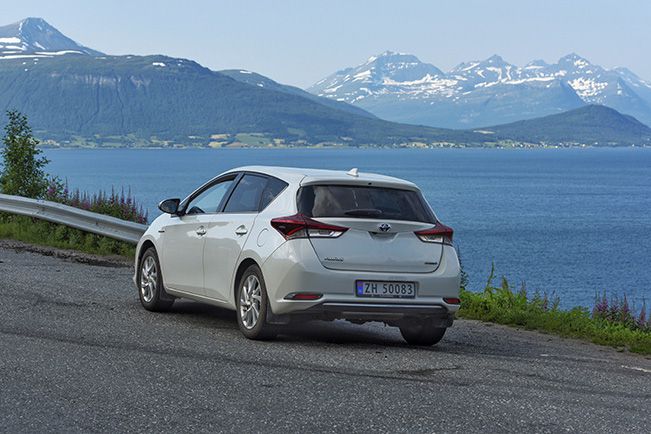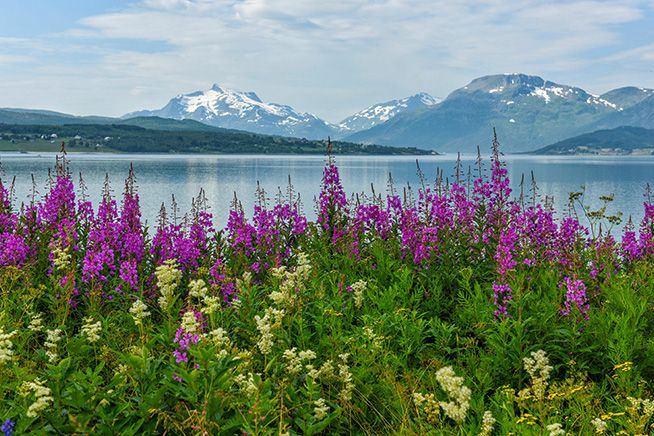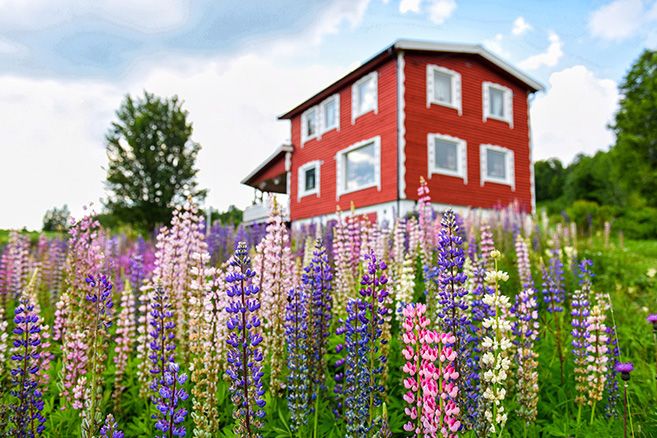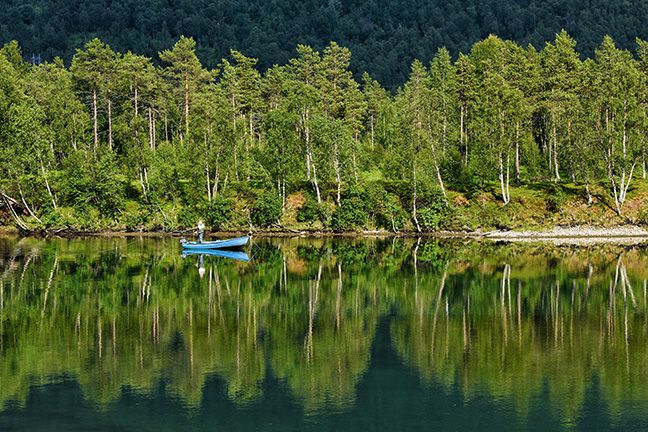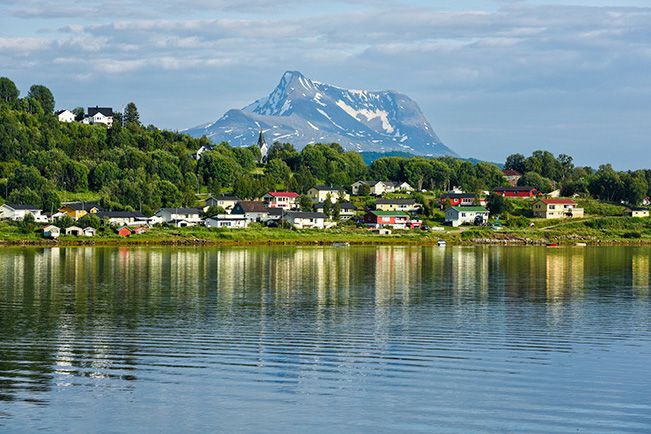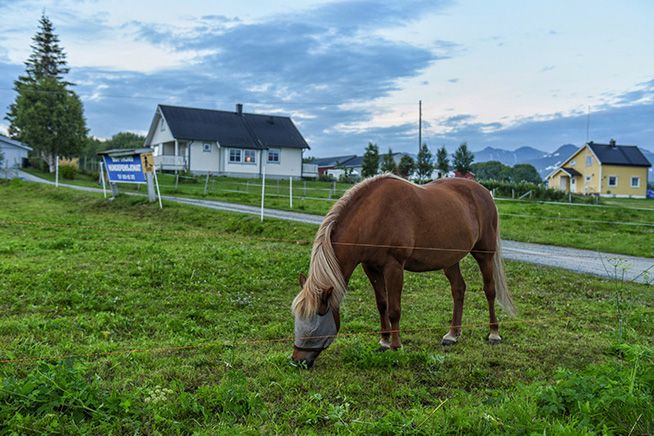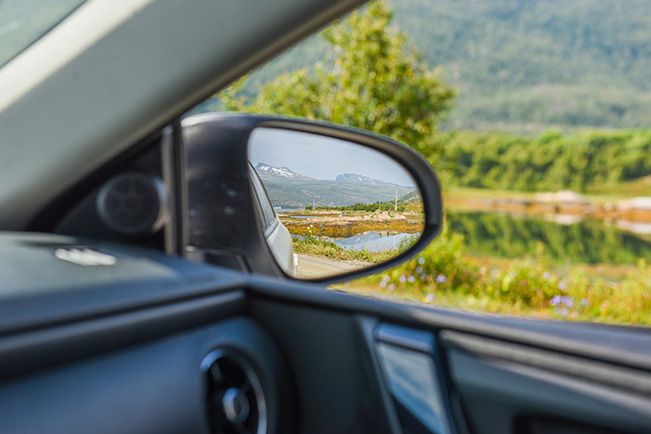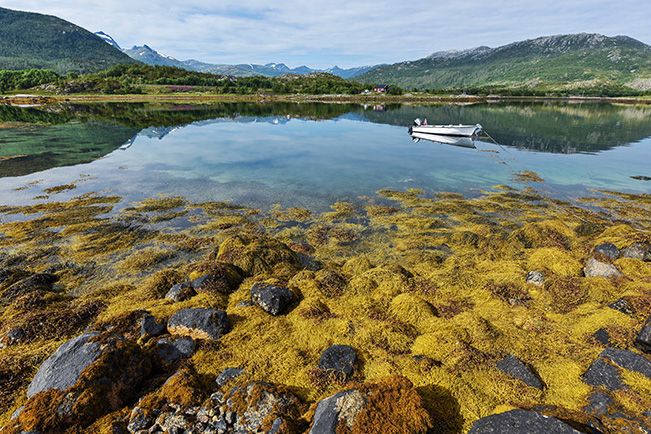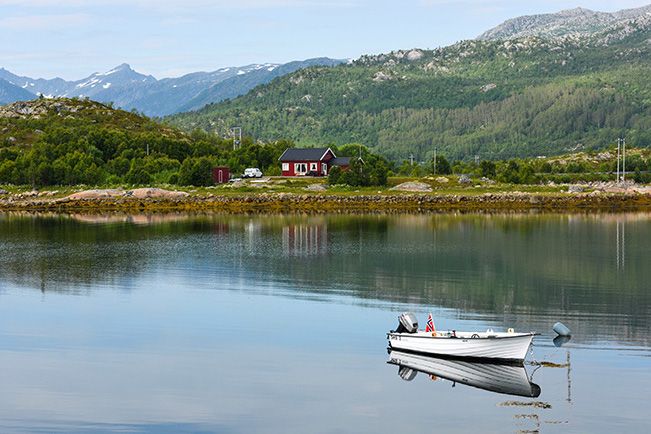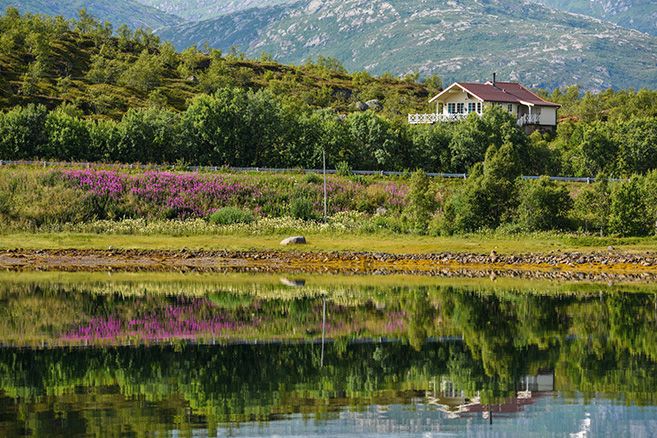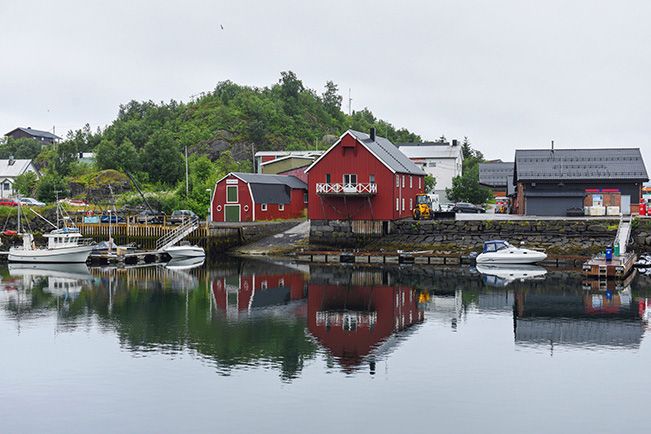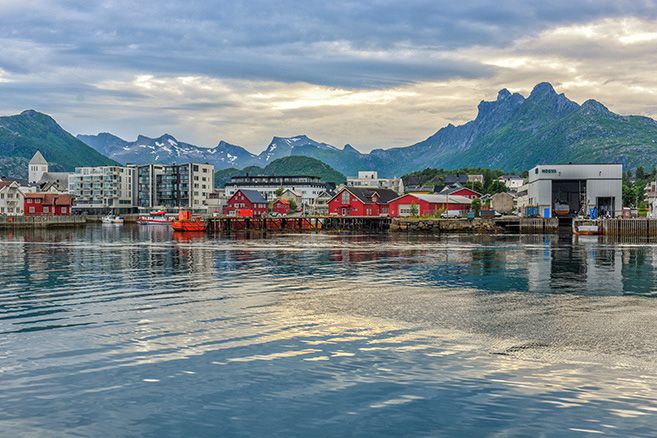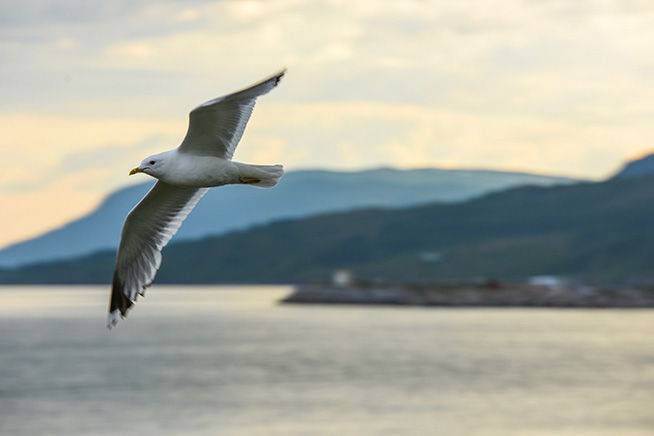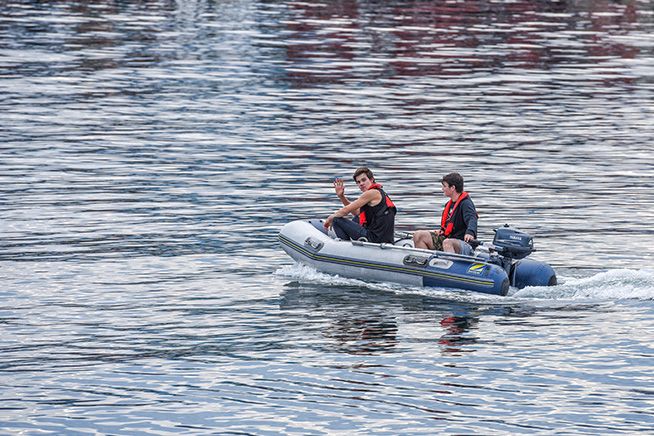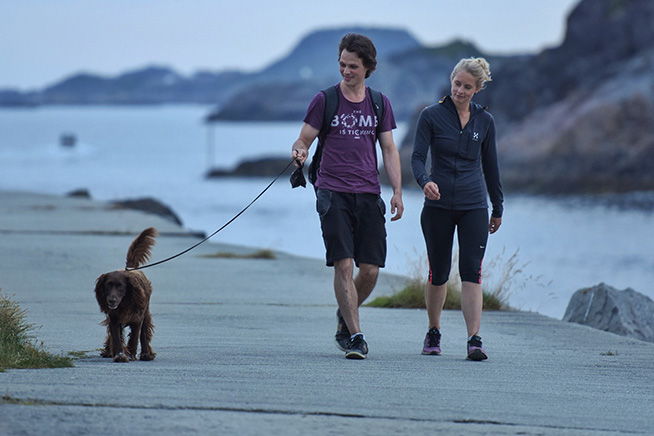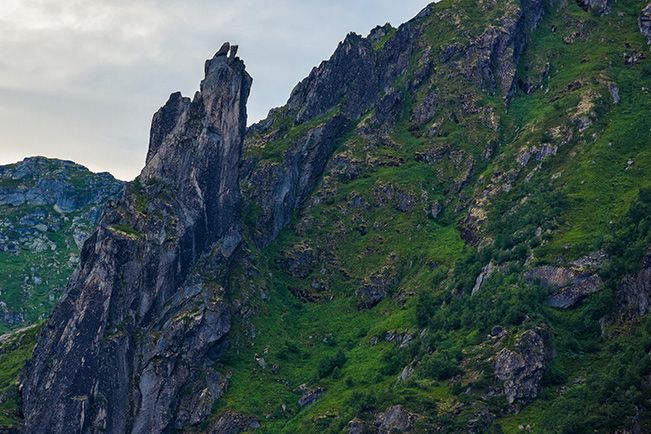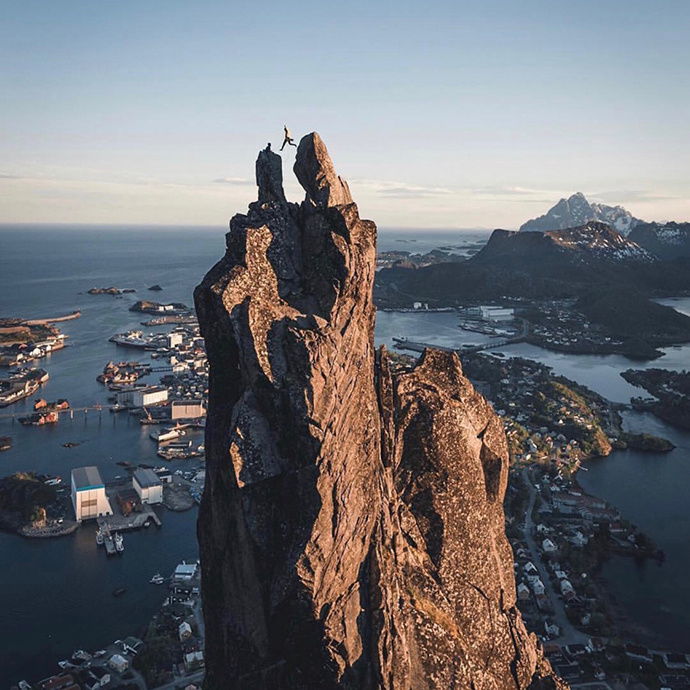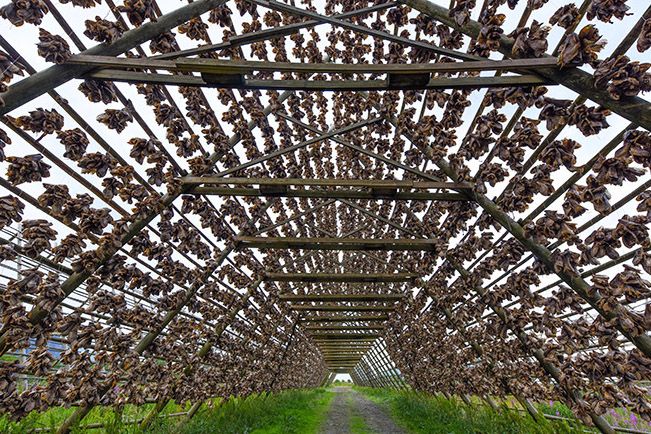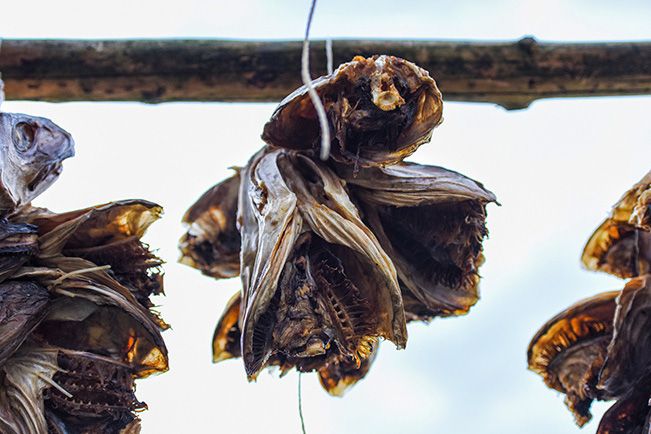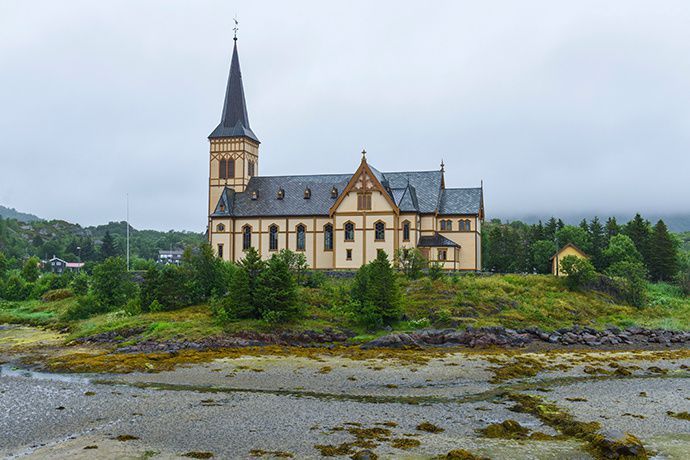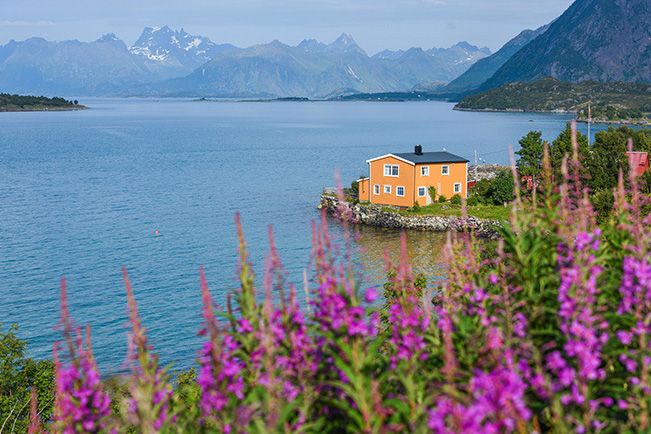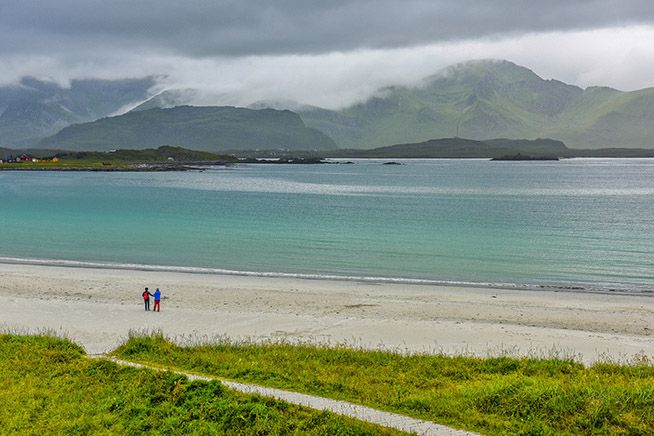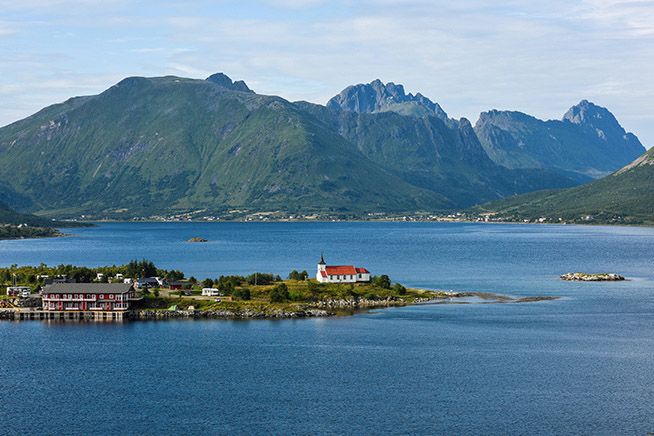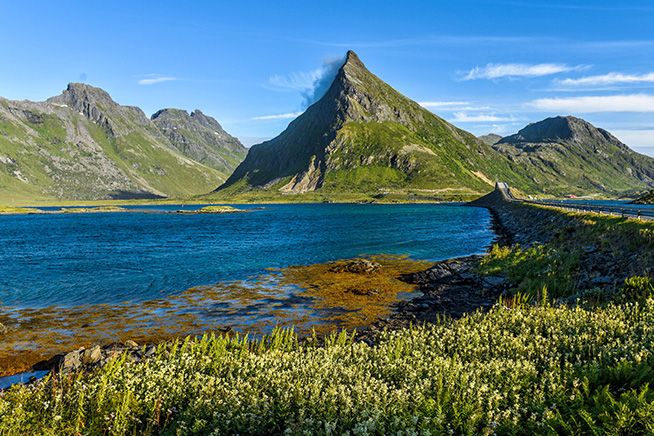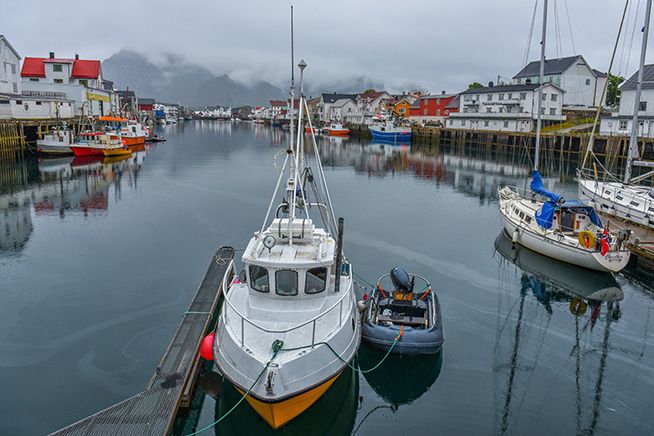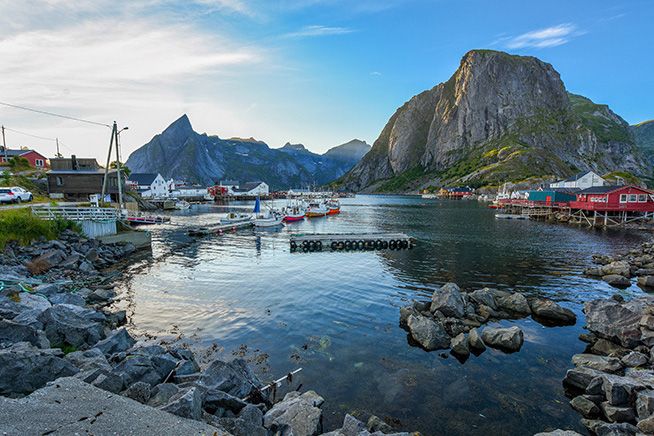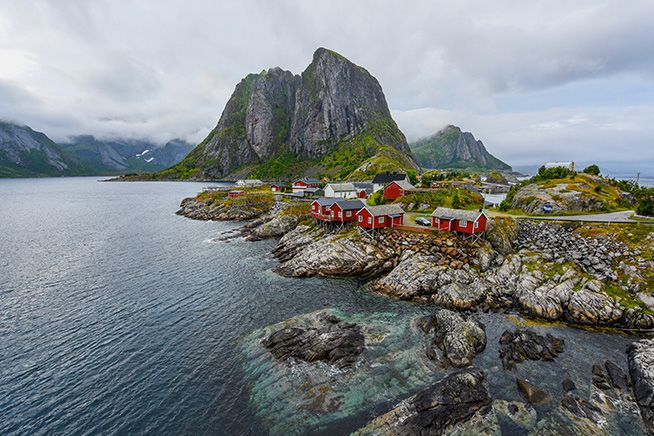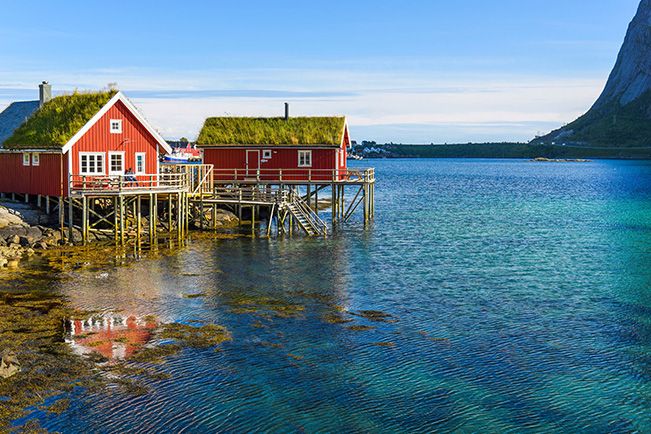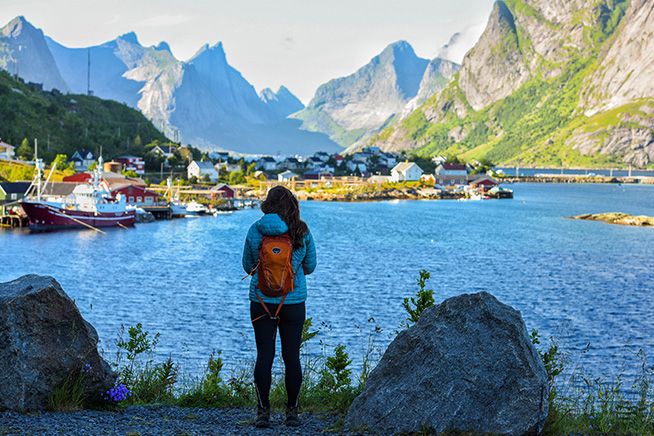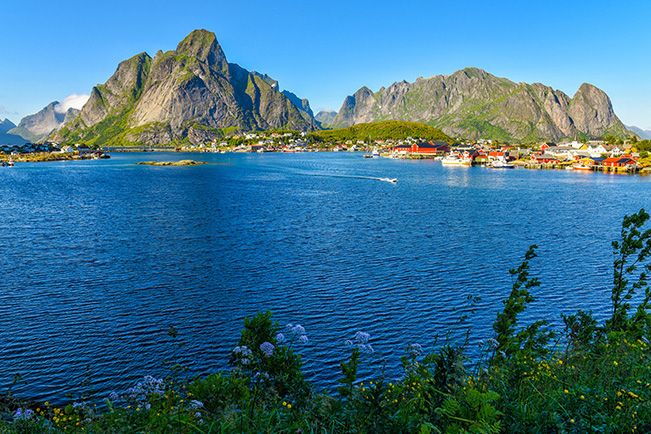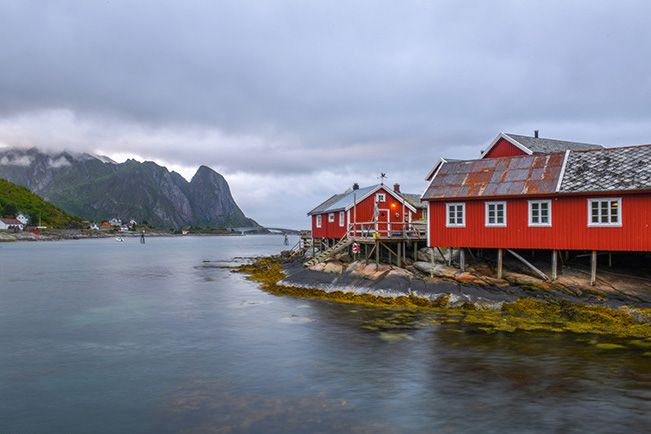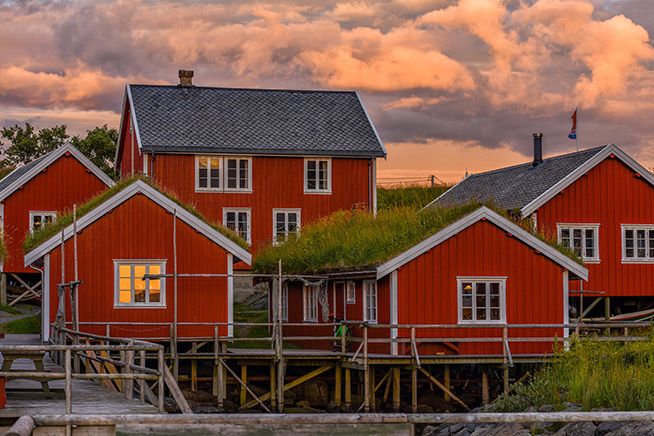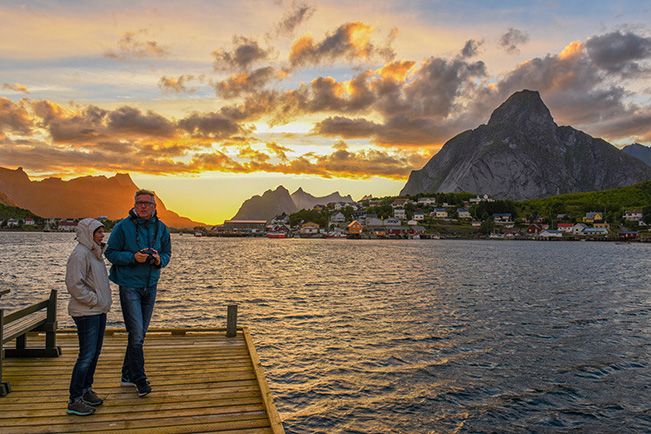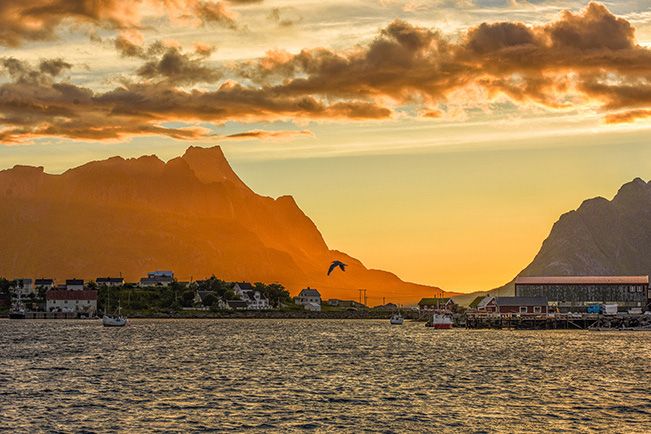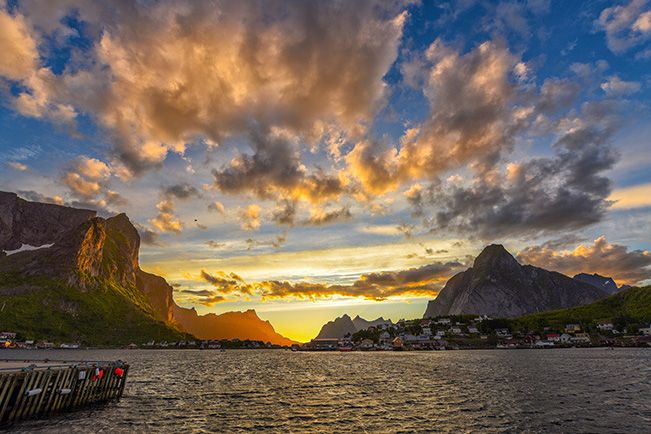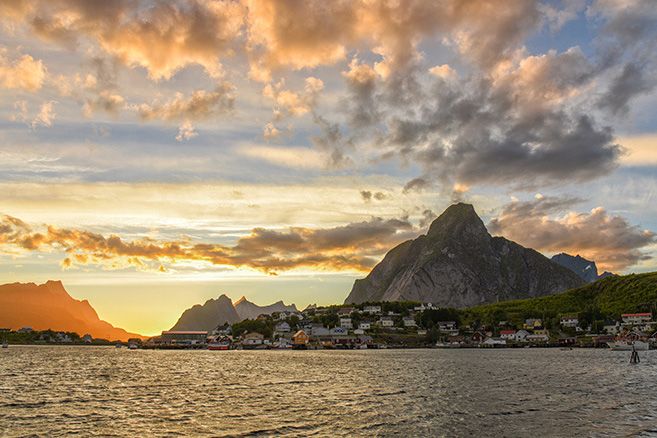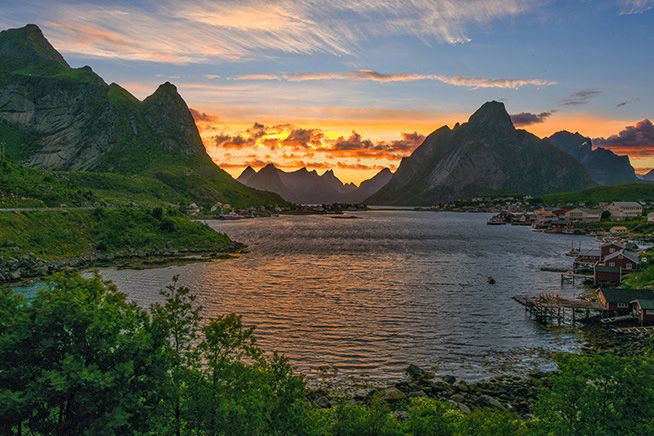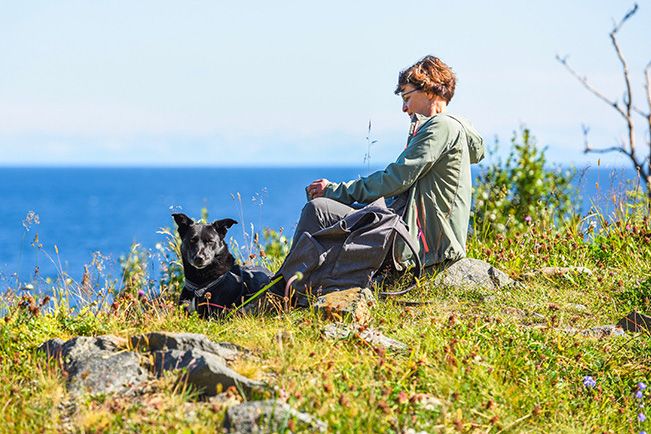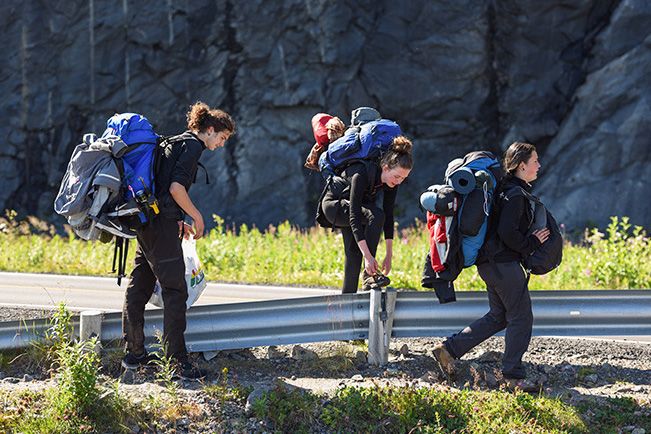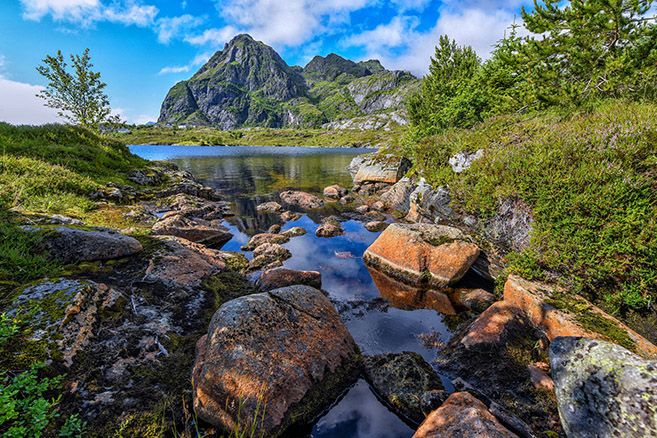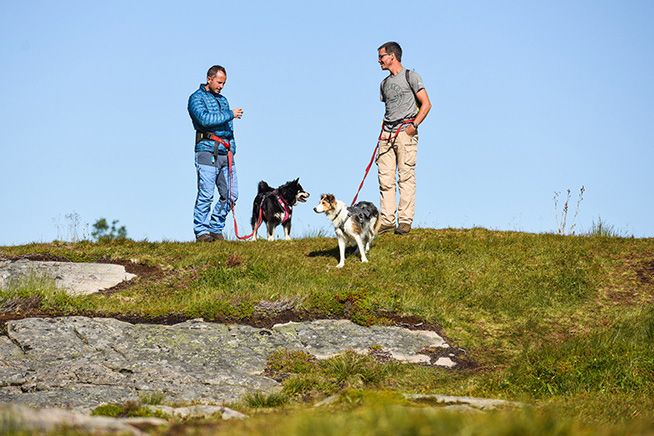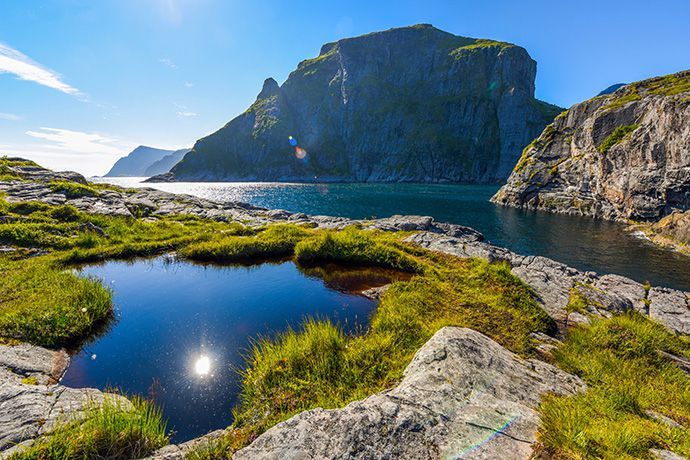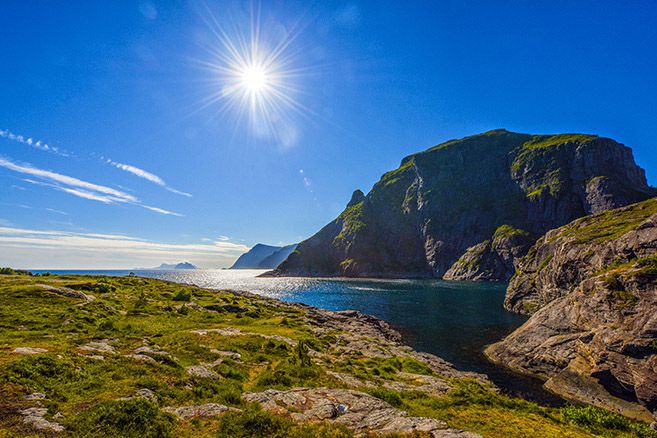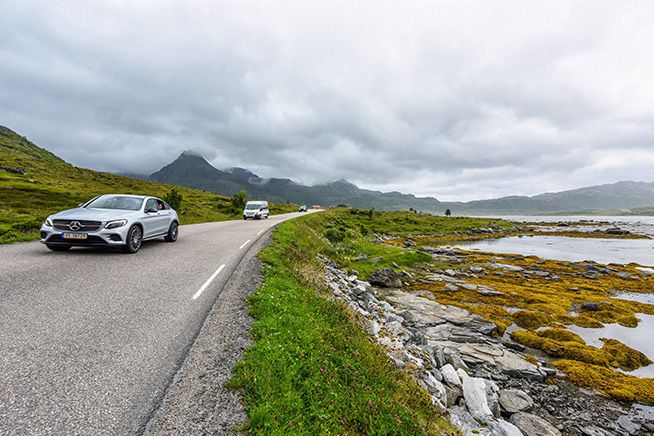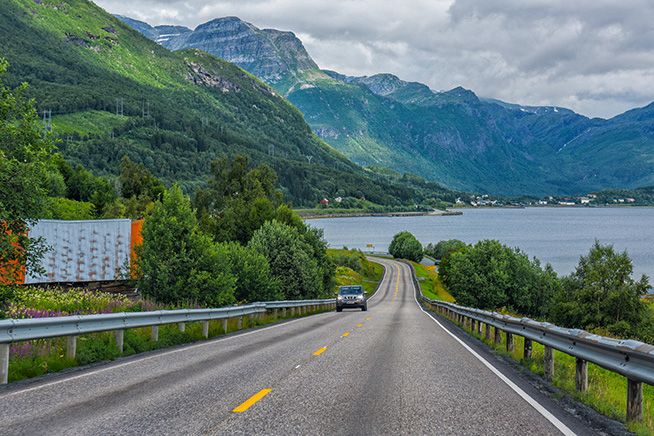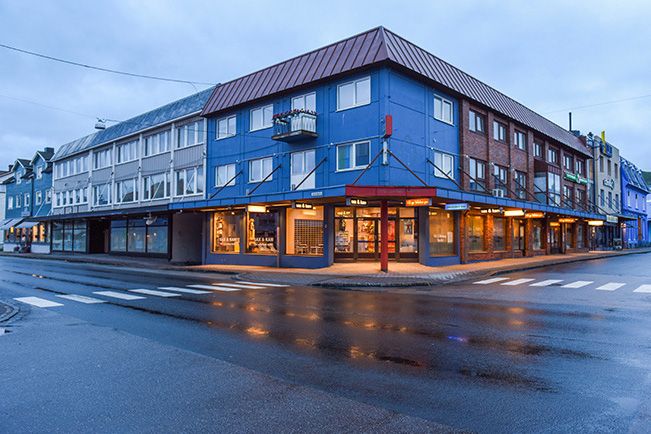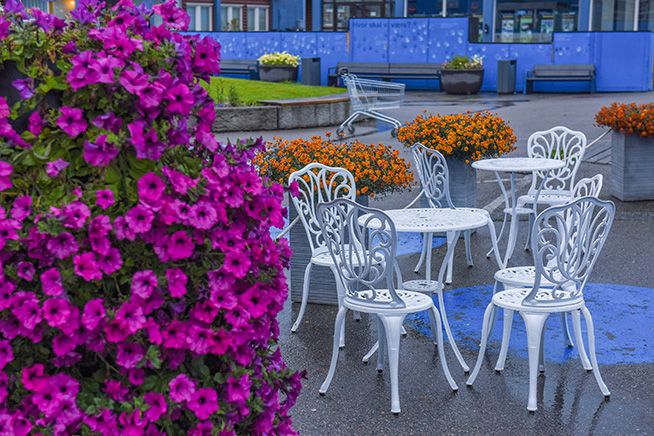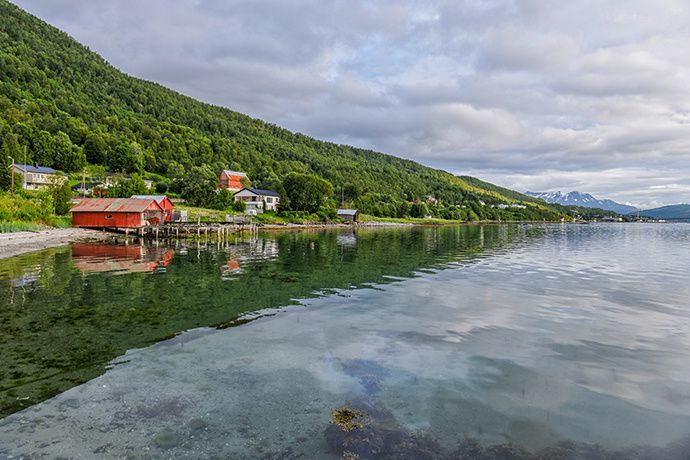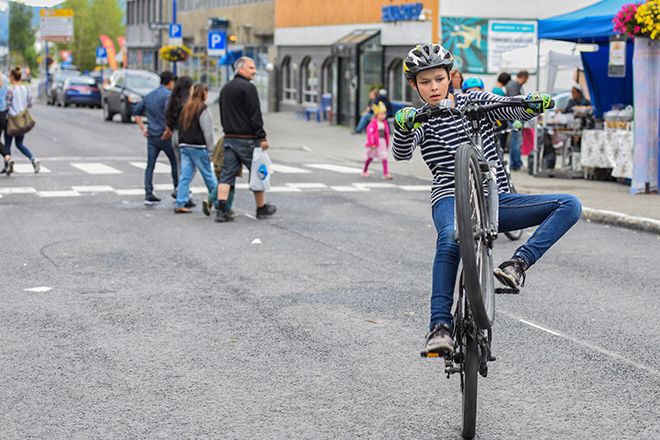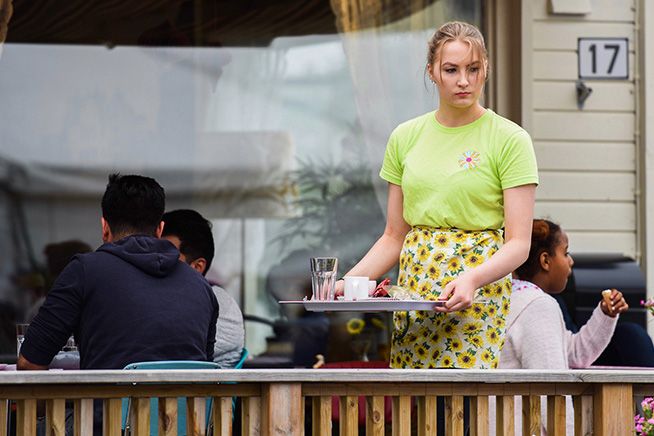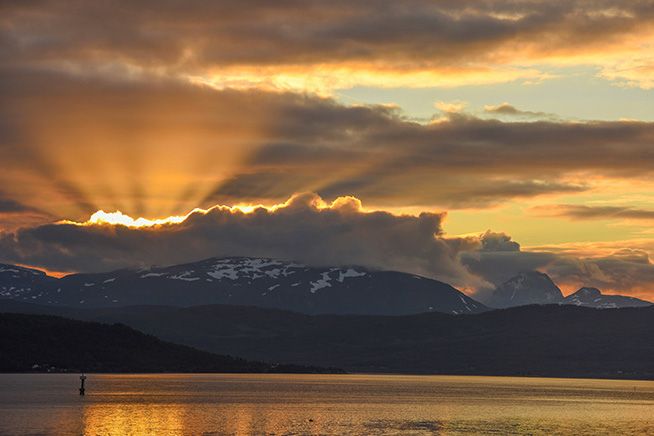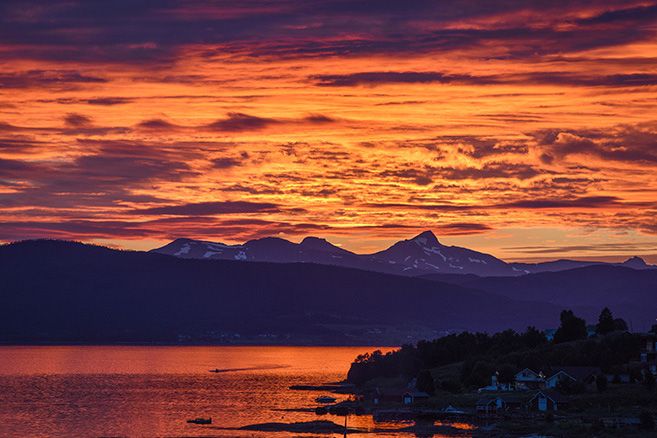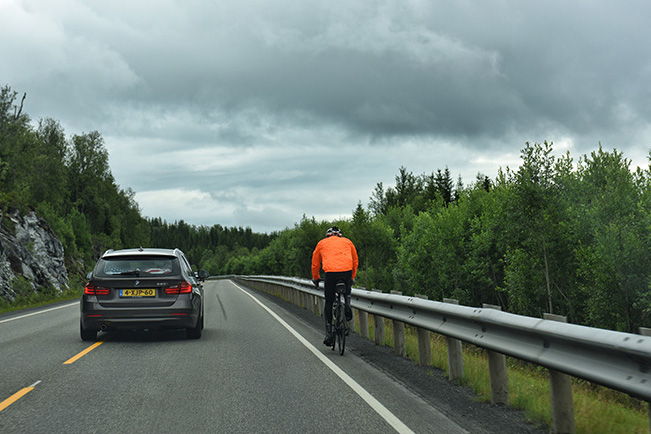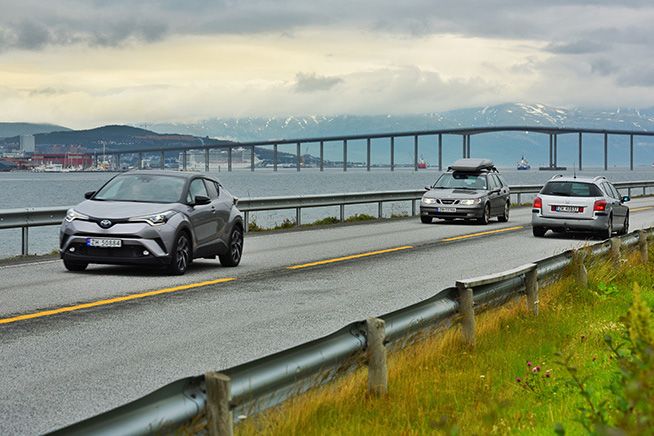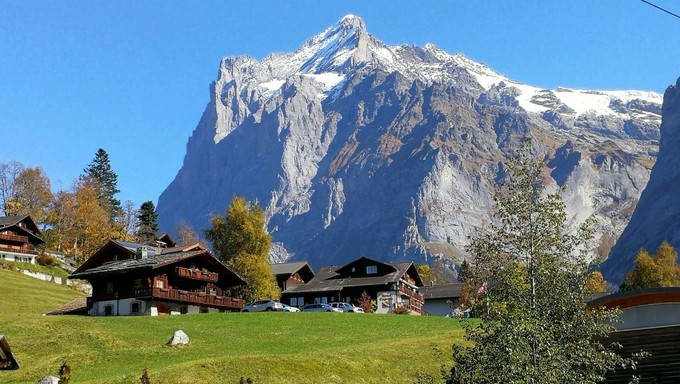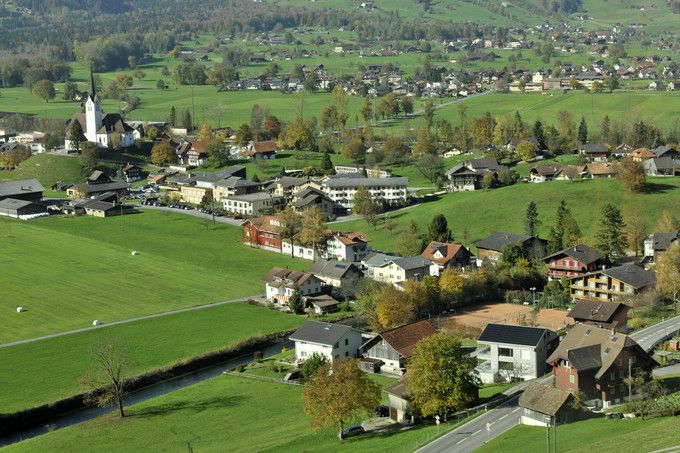In midsummer, July, two years later, I visit Norway again. The beautiful fjords, the lofty mountains, the winding coastal roads, the peculiar midnight sun, the cold and sombre Norwegian forest, the fresh and delicious salmon…all make people fall in love with the icy and beautiful northern European country.
Lofoten Islands carved from ancient glaciers is connected by roads and bridges. The elongated peninsula extends from the European continent to the Norwegian Sea in the North Atlantic, all islands are in the Arctic Circle. The polar scenery and fjord landforms is perfect encounter. The precipitous and beautiful mountain and sea scenery is a paradise for photographers and the darling of countless travel magazines and postcards.
The first day: Tromso
The starting point of this trip is Tromso, the most important port city in northern Norway, ranking seventh among the major cities in the country and the largest city in the Arctic Circle. The entire city built on an island has a population of only 60,000, but it is already the most populous and most prosperous place in Northern Norway.
Because there are so many restaurants, bars, cafes and nightclubs here, and the life is colorful, it was called “Paris of the North” by a French traveler as early as 1900. Located at 69 degrees north latitude, Tromso is known as the “Gate-way to the Arctic”, for five months of the year, the temperature is below zero, and the temperature here is much colder than Paris. Tromso was once a stop for Arctic expeditions, and the statue of the great Norwegian polar explorer Roald Amundsen who was the first to fly over the Arctic still stands above the harbor of Tromso. We stand in the distance and look out over this small city, the colorful buildings dotted between the mountains and the sea, displaying a strong Nordic city style.
The fleeting summer, the luxury and scarce sunshine, the Norwegian summer colorful life, although short, but amazing, I meet a cool, beautiful and icy, vibrant Norwegian summer in Tromso…
From here, we drive towards the westernmost the town of A in Lofoten Islands, E10 is the only major road that runs north to south on Lofoten islands and ends at the town of A, the whole journey is about 550 kilometers, the distance is not far, the road conditions is good, and the scenery along the way is beautiful and there are few vehicles. It is undoubtedly a perfect experience of self-driving trip.
The next day: Tromso-Evenes
It’s a three-hour drive to reach the small village Evenes the next day, here is an important gateway connecting Norwegian mainland and Lofoten Islands. There is a small airport. Therefore, this village of about 3,000 people has become a foothold for most tourists.
Along the way we pass Ofotfjord, although it is not as famous as the three major fjords in the south, but the scenery is no less beautiful, this fjord is little-known, and tourists are scarce, it is like the last piece of pure land on the planet.
The land here is fertile, agriculture and animal husbandry are developed, most of the houses are surrounded by private farms or pastures, people lead an enviable pastoral life. The horse on the pasture is eating the fresh and tender grass lightheartedly, a quiet secluded life scene appears in front of us, let people’s mood instantly become unusually quiet. The yellow house behind us is the sojourn where we stay for one night.
The third day: Evenes-Svolvær
On the third day, we set off from Evenes and drive west along the E10 road to another important town Svolvaer in Lofoten Islands. The whole journey is 120km and takes about 2 hours.
Along the way, the unlimited scenery. The charm of Lofoten Islands is that even in some unknown corners, the scenery is so wonderful, too. Passing through the small town Erikstad, we see the beautiful scenery along the way, I swerve into a fork in the road at will, unexpectedly, I drive into a private farm, the farmer and his wife not only are not angry, but enthusiastically introduce me to the situation here and the scenery change of four seasons.
The scattered islands that is dotted with several log cabins, the rocks after the tide reveal the dark yellow seaweed, mountains far away and the nearest vegetations and wildflowers reflect in the water … The summer landscape can be seen everywhere in northern Norway.
Svolvær where we stay that night is an ancient fishing village and is located on the southern shore of Austvagoy Island, Austvagoy Island is the largest island in Lofoten Islands. Backed by towering and steep mountains, Austvagoy Island faces the gloomy and mysterious Norwegian Sea. The small town is not too big, but it has the most modern convenience facilities and colorful life on the island. The beautiful mountain and sea landscape and the wealthy life is like a secret paradise on earth.
Because of the warm current in the surrounding seas, tens of millions of salmon and cod gather here every spring, so fishing has been the pillar industry here since hundreds of years ago. To this day, most of the villagers still live by fishing.
At sunset, local young people drive their own yachts out to sea and chase the midnight sun, this is so enviable.
The small town is also the stopping point for tourists to Lofoten Islands. There are a few hotels and homestays in the town, the price is relatively expensive.
In addition, there is also a steep mountain peak(Svolværgeita) in Svolvær, Svolværgeita has become a reason for many European and American mountaineers come to here, they all want to conquer this weird-looking mountain, but due to the steepness of the mountain and the high difficulty of climbing, only with the help of local mountain guides and professional climbing equipment, they can climb constantly to reach the top of the mountain.
Local fishermen set up huge fish-drying racks on the seashore. Because of the different seasons, the seafoods harvested are also differences. The fishermen dry different seafoods here. At this moment, all kinds of fish heads are dried here. According to local people, these fish heads are inedible to human after they are dried up in the sun, however, they can be made into cat food and dog food.
The fourth day: Svolvær-Reine
On the fourth day, there is a little rain in the early morning. We set off from Svolvær to Reine, the whole journey is 120 kilometers and takes about 2.5 hours.
In Norway in summer, colorful wildflowers bloom in the mountains. Wide varieties, bright in colour, all these are just like a painting.
The church located between the mountains and sea is particularly eye-catching and extremely sacred.
When we pass by this highly distinctive mountain peak, despite cold winds roar outside the car, I still difficult to resist the temptation of the beautiful scenery, I take out my camera and take photos.
I drive along the coastal winding mountain roads, one minute it’s raining and the next minute the sun is shining along the way, the passed fjords, bays, villages and forests… Norway in the gloomy tone is its most authentic look, cold beauty and dignity, mystery and implict.
On the way to Reine, we pass several small villages with wonderful scenery, at the magnificent fjord seaside, on the intricate reefs, a dozen brightly-coloured cabins line at the foot of the towering mountains, and all kinds of yachts are anchored off shore, the interdependence and high fusion of man and nature reach the extreme in Northern Norway.
Reine is the main village at the end of Lofoten Islands and the most fascinating beauty spot in Lofoten islands. The small village is surrounded by mountains, the scenery is matchless. There are few holiday houses in Lofoten Islands, so it also attracts quite a few tourists to come and stay.
I live in the vikings’s attic and I can experience the life of the locals. Behind the guest house are dozens of scattered red holiday cabins, we can see the most iconic and invincible landscape in Reina from each cabin. The accommodation expenses is expensive and is four to five times the expenses of the guest house.
The beautiful midnight sunset attracts almost all tourists in the town, we all congregate at the beach and enjoy the sunset. All tourists actually is only a dozen people, but they also make the sleepy town become lively. An old couple from England just arrive in Reine this afternoon, they are moved by the beautiful scenery in front of them. They say that their friend come here for vacation and come back in despair because of rainy weather. But they meet the perfect sunset as soon as they come. It’s fair to say that the God’s favor to them, and the same goes for us.
It is almost midnight, and the sunset glow is still so bright and attractive.
On the other side, the sea and sky are pink, and the dreamlike scenery is just like this.
The fifth day: Reine-A
On the fifth day, we drive 10 kilometers from Reine to A, Moskenes, we meet the lonely and glamorous cape scenery, we pass the aunt sitting on the cliff with dog and a group of walkers carrying huge packs.
A, Moskenes is not only adjacent to the sea, but also has many mountain lakes, and the scenery is diverse and fascinating. European and American backpackers like to camp by the lake and sleep in the embrace of nature. Every morning they open their eyes, seeing such a beautiful scenery, that is what they want to.
Here is a beautiful place, with precipitous mountains and beautiful fjords, you can easy to shoot a postcard-like scenic film with one-click.
Two uncles are hiking while walking their dog.
The blue sea and sky, we stop at the end of Lofoten Islands as if we are at the end of the world. Although the sun is shining at noon, we feel very cold because of the cool sea breeze. We still difficult to resist invasion of cold on the rocks and drive away.
The sixth day: Reine-Sortland
On the sixth day, we depart from Reine and return to Tromso along the E10 road. We re-appreciat the roadside scenery in the rain and mist. Without sunlight, the scenery of Lofoten is becoming more gloomy, but much more like a fairyland, it’s also another taste, it is more in line with my impression on Norwegian temperament. It takes 4 hours to drive from Lofoten Islands to Sortland.
Sortland is a municipality in Nordland County in northern Norway. Although there are no special attractions here, there will be a wonderful phenomenon of midnight sun from late May to late July each year, and from the end of November to early January each year, there will be a polar night landscape. I drive back to Tromso from the Lofoten Islands and stay here for one night, but the weather is bad and I can’t see the midnight sun, but I run into this quiet and secluded blue town unexpectedly. At night, I walk in this mysterious blue space and carry the photographic camera throughout, every corner of the street is a place full of imaginations ans looks dreamy …
The seventh day: Sortland-Finnsnes
On the seventh day, starting from Sortland, about 2 hours, after 120 kilometers, we arrive at Finnsnes, the main town of Senja, another tourist destination in Northern Norway. We stay for one night and return to Tromso the next day.
Finnsnes is a small town that is the administrative centre of Senja Municipality in Troms og Finnmark county, Norway. The town is located on the mainland part of Norway, just across the Gisundet strait from the island of Senja. Finnsnes’s population is about 4,000, it is slightly inferior compared with the beautiful towns along the coast of Lofoten Islands.
In late afternoon, the rain stop and the sky clear up, the last sunset brings the burning clouds like the flare radiance shining the people, I fall in love with the beautiful scenery, it is a trip worth while. Traveling encounters are the most wonderful, and the unexpected scenery can be more deeply rooted in the hearts of the people.
The eighth day: Finnsnes-Tromso
On the eighth day, starting from Finnsnes, it is still rainy all the way, after 140 kilometers, about 2 hours, we return to Tromso Airport. The one-week self-driving tour is officially ended.
